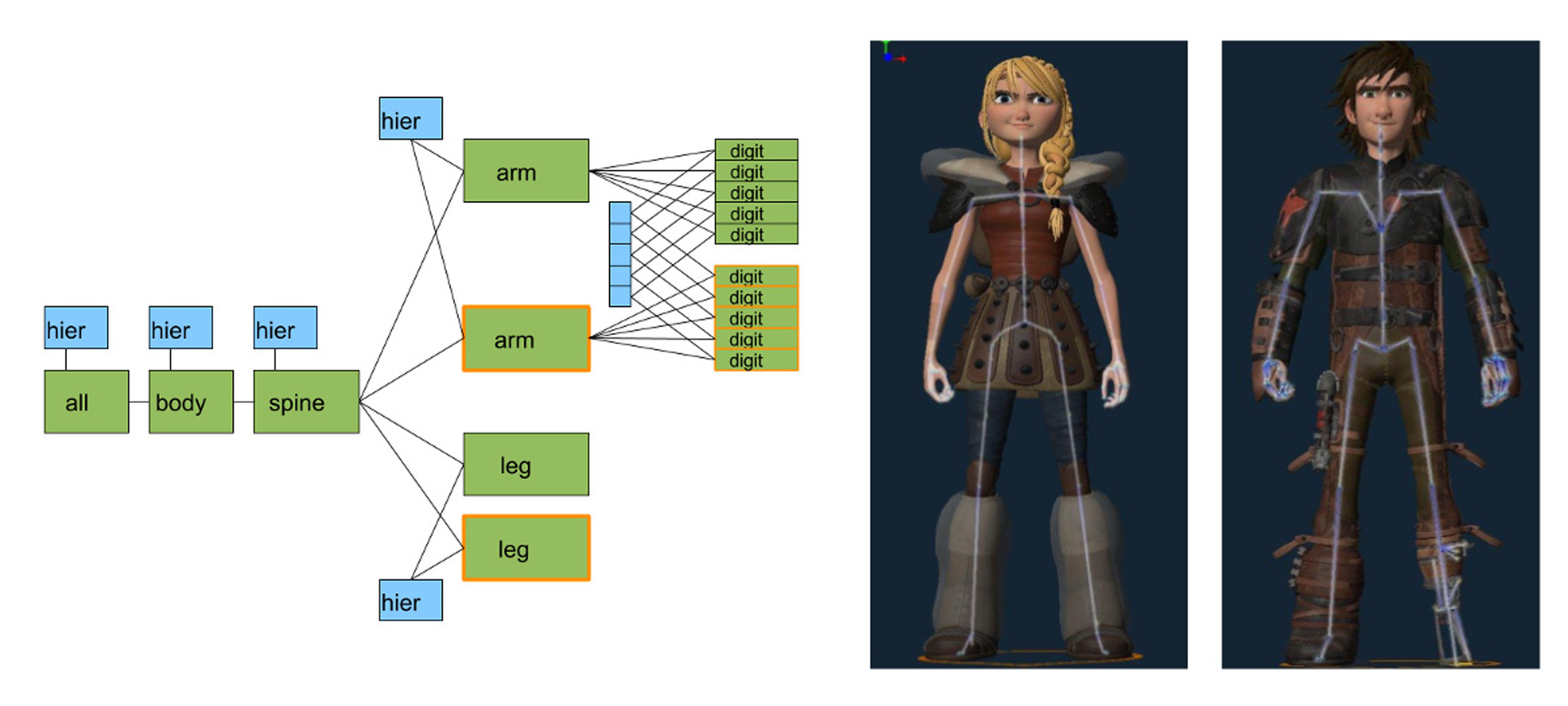“Hierarchy Models: Building Blocks for Procedural Rigging”
Conference:
Type(s):
Entry Number: 51
Title:
- Hierarchy Models: Building Blocks for Procedural Rigging
Presenter(s)/Author(s):
Abstract:
Hierarchy Models provide an encapsulation mechanism for joint hierarchies that yield an essential building block for procedural rigging. With Hierarchy Models, joints travel through dependency graphs (DGs) as an atomic entity. Operation nodes in the DG can modify all aspects of input hierarchy and even perform topological modifications like adding or removing joints. The Hierarchy Model reduces complexity in character rigs, improves separation between data and behavior, provides a clean interface, and simplifies understanding and debugging rigs. It offers geometric evaluation optimizations, and promotes parallelism in the DG structure.
References:
Jesus Nieto, Charlie Banks, and Ryan Chan. 2018. Abstracting rigging concepts for a future proof framework design. In ACM DIGIPRO 2018. ACM. DOI:http://dx.doi. org/10.1145/3233085.3233088







